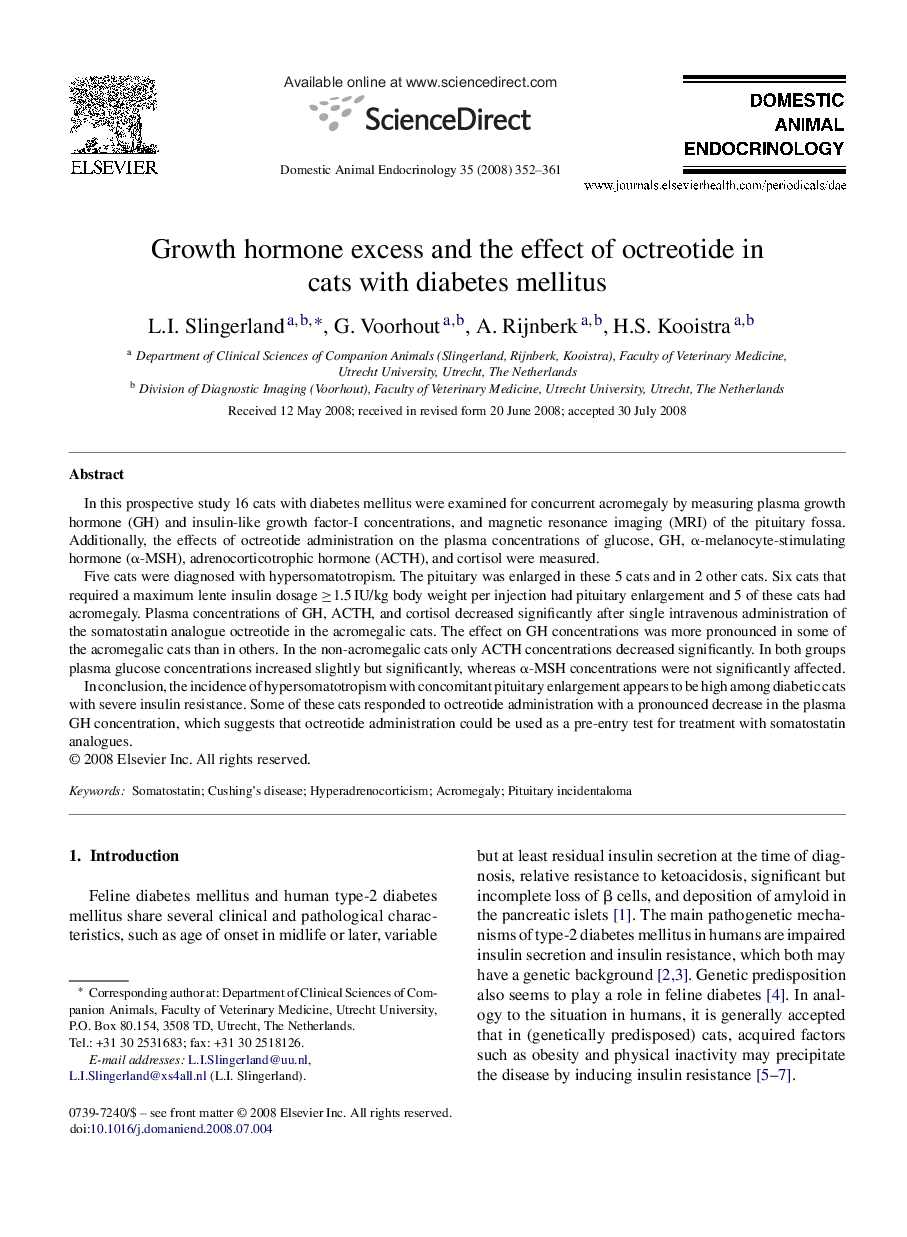| Article ID | Journal | Published Year | Pages | File Type |
|---|---|---|---|---|
| 2394104 | Domestic Animal Endocrinology | 2008 | 10 Pages |
In this prospective study 16 cats with diabetes mellitus were examined for concurrent acromegaly by measuring plasma growth hormone (GH) and insulin-like growth factor-I concentrations, and magnetic resonance imaging (MRI) of the pituitary fossa. Additionally, the effects of octreotide administration on the plasma concentrations of glucose, GH, α-melanocyte-stimulating hormone (α-MSH), adrenocorticotrophic hormone (ACTH), and cortisol were measured.Five cats were diagnosed with hypersomatotropism. The pituitary was enlarged in these 5 cats and in 2 other cats. Six cats that required a maximum lente insulin dosage ≥1.5 IU/kg body weight per injection had pituitary enlargement and 5 of these cats had acromegaly. Plasma concentrations of GH, ACTH, and cortisol decreased significantly after single intravenous administration of the somatostatin analogue octreotide in the acromegalic cats. The effect on GH concentrations was more pronounced in some of the acromegalic cats than in others. In the non-acromegalic cats only ACTH concentrations decreased significantly. In both groups plasma glucose concentrations increased slightly but significantly, whereas α-MSH concentrations were not significantly affected.In conclusion, the incidence of hypersomatotropism with concomitant pituitary enlargement appears to be high among diabetic cats with severe insulin resistance. Some of these cats responded to octreotide administration with a pronounced decrease in the plasma GH concentration, which suggests that octreotide administration could be used as a pre-entry test for treatment with somatostatin analogues.
